

Sponsored
How did one lawsuit in 1995 make professional footballers filthy rich overnight?
over 7 years ago Sponsored Content
Even if you aren’t familiar with sports, you’d know that every sport – from major ones like football or tennis to really niche ones like curling – has a specific set of rules that govern how it’s played. You’d also have at least heard of names such as International Olympics Committee (IOC), FIFA, and ITF; which are the regulatory bodies that set and enforce these rules. So in a way, these guys are like the law-passing parliaments and courts (the legal kind, not the ones you play badminton on) of the sporting world.
This now leads to a problem… what happens when someone doesn’t agree with the decisions of the regulatory bodies? Can real-world courts and laws step in, and where are the lines drawn? For example, if a football player has a problem with a contract he signed with a football club, should he bring it up with FIFA, his local football association, or the courts?
Well, actually there is something known as sports law and it’s basically an amalgamation of all kinds of laws such as contract, tort, and many others. While we are cheering on our favourite players and teams, we may not be aware of how the undercurrent of laws overlap in the game. We may scream, “FOUL” but a lawyer might scream “SECTION 18 OAPA 1861”.
So if you’re curious about how sports law works or if you’re a law student drooling at the prospect of marrying your love of sports with your love for law...
The British Council has your answer(s)!
The British Council will be having a FREE seminar on how law shaped football and other sports on March 4th at the Kuala Lumpur Convention Centre, conducted by Alfonso Valero from Nottingham-Trent University in the UK.
This is just one of the many interesting seminars that you can check out at the Study UK exhibition, such as how you can get a Master of Law (LLM) Bar Practice (March 3rd). Head over to the British Council’s Facebook page for a full list of seminars in KL and Penang. Better come early because seats are limited. But not just that, if you pre-register using this link, you stand a chance of winning a free round trip to London!
Now, let’s look into the lawsuits that allowed footballers to be ballin’, plus a few other milestones in sports law.
1. The lawsuit that made football players VERY rich

If you are a hardcore football fan, you would know that football players get paid an obscene amount of money. One the highest paid footballers in the world, Christiano Ronaldo has a total earning of $93 million, with his salary and bonus alone amounting to a staggering $58 million. However no football player would have been able to bling it like Beckham if not for a court case that literally turned the football world upside down.
Before this, football clubs had all the power to trade players around according to their whim and fancy. The club held the ultimate decision in whether to allow you to transfer to another club for free or demand for a transfer fee from the new club. If the new club can’t afford the transfer fee, players either have to pray for a free transfer or just remain stuck in the club with contracts that usually didn’t benefit them.
This all changed when a young Belgian midfielder named Jean-Marc Bosman took his former football club to court.

Image from vavel.com
In 1990, Bosman was coming to the end of his contract with RFC Liege and wanted to accept a better contract from a French football club, Dunkirk FC. The transfer fee that Liege demanded from Dunkirk was too high so the deal fell through. This forced poor Bosman to stay on in Liege with a 75% pay cut. When he complained, the football federation told Bosman that if he refused to sign the contract with Liege, he would be suspended.
Bosman then thought enough was enough and he contacted a lawyer.
When they approached UEFA, doors were slammed in their faces. Bosman then took his case to the Court of Justice of the European Union (CJEU) – the highest court in the European Union – and spent five years of his life embroiled in a bitter legal battle. What happened next is succinctly explained by the words of Sir Alex Ferguson (emphasis added),
“Once the European Court of Justice ruled that clubs no longer had to pay transfer fees after the expiration of a player’s contract, all hell broke loose. Suddenly it was a free-for-all” – Sir Alex Ferguson in his book Leading
The CJEU ruled that players in the European Union should be given the right of free transfer when their contracts end. This judgment basically took the power out of the hands of the football club and placed it squarely in the hands of the individual players. Players who were almost at the end of their contract were now free to move anywhere...for free.
Some of biggest names in football have benefitted from what is now known as a Bosman transfer and this includes the likes of Steve McManaman, David Beckham, and Micheal Ballack. Despite all this, Bosman lost his career and was only paid damages which were barely enough to cover his legal costs and lost earnings. However, Bosman says that:
“It was the ruling of the century in the world of sport and, even if I’ve had difficult periods since and all together this has been like some sort of test, it’s made me think. It’s made me think that I’ve contributed” – Bosman, in an interview with the Daily Mail
We should note that the Bosman ruling and its implications to professional sports is one of the major topics covered in British Council’s seminar.
2. The first sports-related lawsuit happened more than 350 years ago!
Although sports is a highly encouraged recreational activity that we take for granted nowadays, it wasn’t the case back in the day.
Believe it or not, sports law is believed to have emerged from the case of Abbot v Weekly, which happened in an unnamed village in Oxfordshire waaaaay back in 1665, involving the right to play sports. Although football was popular enough at the time to be namedropped by Shakespeare in his plays, it actually involved the recreational sport of…..dance.
What happened was this – one of the villagers owned a piece of land that was enclosed by hedges to keep random people out (kinda like our house fences today). However, this hedge didn’t stop the rest of the villagers from entering the poor dude’s land to party like it’s 1699.
The landowner was unhappy that his land was being turned into an impromptu nightclub for two reasons; that the dancing was killing his grass, and that the villagers would enter and dance whenever they wanted to (instead of at certain times of the year). So he decided to sue the village people (not the disco band), arguing that because the dancing wasn’t seasonal and caused damage all year round, the court should stop the dancers from trespassing onto his land.

The villagers counter-argued and said that they had gained the rights of recreation on the land since they danced there from time immemorial, from their fathers to their grandfathers’ grandfather. And the Court agreed with them! The Court ruled that since the villagers had danced on that piece of land since pretty much forever, it created a recreational right, and that it is necessary for them to have their recreation.
So what does this have to do with playing football at your local padang?
Well, the implications of this ruling was only felt 200 years later during the Industrial Revolution, when people started working shifts in factories or offices. Recreation time became even more important as a way to escape the regimented work life so all forms of sports was considered recreation, with football and rugby being particular favorites in England. For instance, factories implemented rules that allowed their workers to stop work at 2pm on Saturdays for recreation, and laws were passed to prevent recreational land from being turned into factories.
This recognition of the right to recreation created the foundation of how sports are played and regulated in the UK (and around the world) today.
3. Women don’t have an easy time when it comes to sports
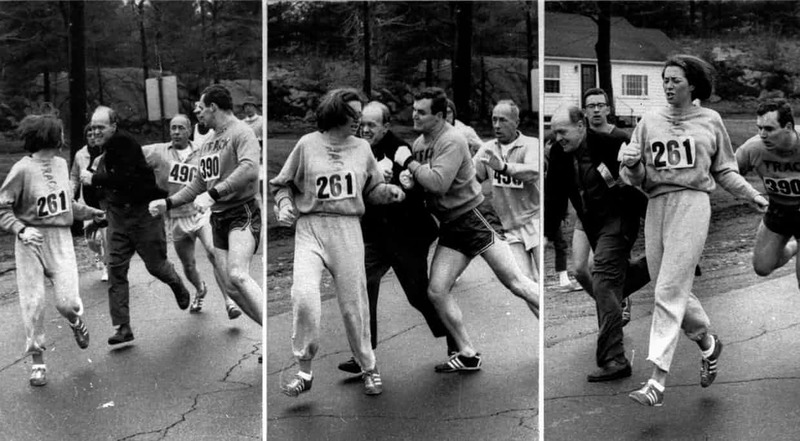
The image above is from the 1967 Boston Marathon when Kathrine Switzer was assaulted by an official for participating in the then all-male marathon. You may have seen it on Facebook to encapsulate the battle of female athletes to be taken as seriously as their male counterparts. Another popular example of this is when female tennis player Billie Jean King beat (male) World No. 1 Bobby Riggs in a match that popularized the phrase “Battle of the Sexes”.
While female athletes are taken more seriously nowadays, discrimination still exists. The best example can be seen from a groundbreaking case of Sagen v Vancouver Organising Committee for the 2010 Olympic and Paralympic Winter Games where 15 female ski jumpers took the Vancouver Organising committee to court for discriminating against female ski jumpers.
The short gist of the story is that, according to Rule 47(3) of the then Olympic Charter (it changes quite frequently), a sport can only be played at an Olympic level if either one of the following conditions were fulfilled:
- The event is practiced by men in at least 50 countries and 3 continents
- The event is practiced by women in at least 35 countries and 3 continents
At the time, both the men and women ski jumpers didn’t meet the requirements but the International Olympic Committee (“IOC”) decided to use its discretion to allow the men’s ski jump event because it was historically hosted in the Olympics, while refusing to do the same for the female event.
And so the female jumpers went to court, claiming that, because of their sex, their equality rights under section 15 of the Canadian Charter of Rights and Freedoms have been violated. While they lost the case on grounds that the events were not related to the issue of equality, the evidence put forth by the women showed how the world is coming to recognise that women athletes are still being discriminated against in terms of event participation, funding, and training opportunities.
But not just that, female athletes also have to prove how “female” they are!
You may not know this, but female athletes are “sex-tested” before they can be allowed to compete to prevent sneaky countries from sending in male athletes dressed as women to compete. However, the case of Indian female sprinter Dutee Chand brings about a new concern – what if she’s a real woman, but with male hormones?
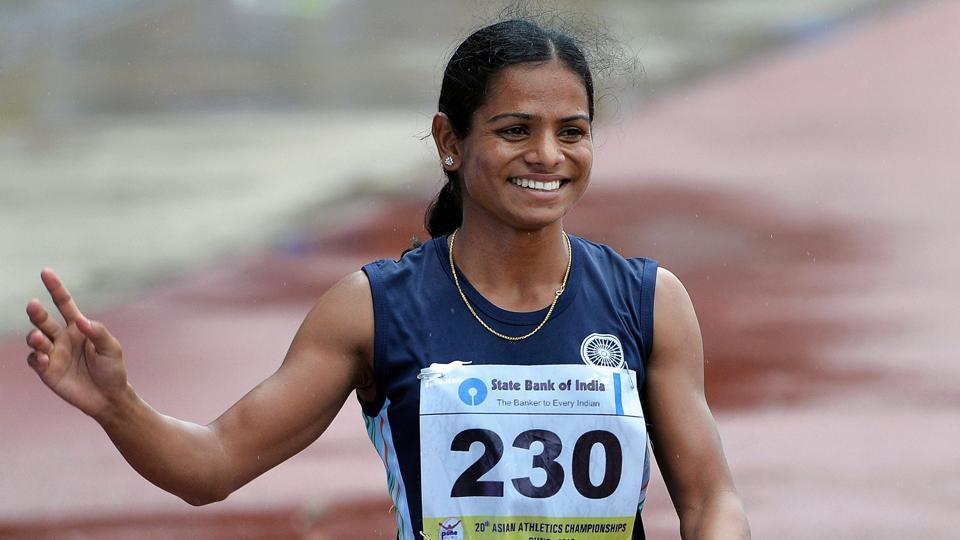
Basically, hyperandrogenism is a condition where a female body contains too many male hormones, commonly testosterone. Some sports regulatory bodies like the International Association of Athletics Federations (IAAF) have rules against hyperandrogenism, claiming that female athletes with high testosterone levels had an unfair advantage because testosterone improved performance.
In Dutee’s case, she failed the hormone test due to her naturally high levels of testosterone and the IAAF banned her from competing in the Commonweath Games and Asian Games. Refusing to take a hormone treatment to lower her testosterone levels, she sued... and won.
“Although athletics events are divided into discrete male and female categories, sex in humans is not simply binary ... ‘Nature is not neat.’ There is no single determinant of sex.” – Court of Arbitration for Sports
The Court of Arbitration for Sports suspended hyperandrogenism rules for two years and asked the IAAF to provide evidence for their hyperandrogenism claims. If they were unable to prove the claims, the suspension would be permanent.
4. The case that stops you from suing a player who injures you
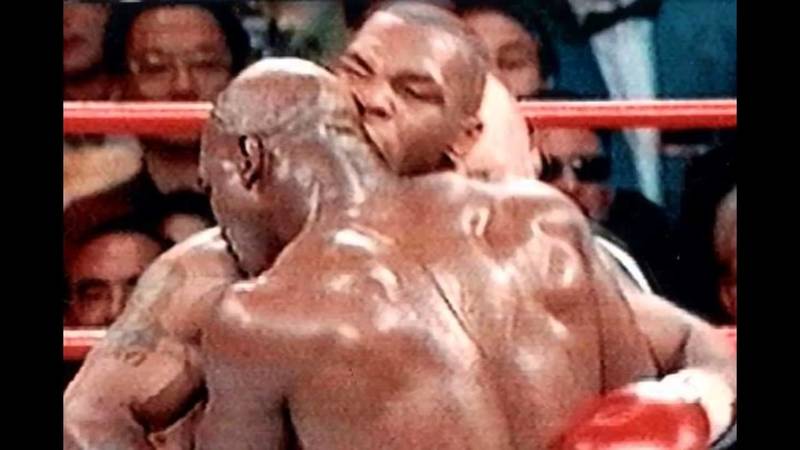
Ever wondered why you rarely (if ever) hear of athletes suing each other because of injuries sustained during a match? If your football career was ended because some other player broke your leg during a tackle, you should be able to sue for lost income, right?
In law, there’s a thing called the defence of consent. The way it works is like this – if you were playing rugby with your friends and a tackle caused your shoulder to dislocate, the person who tackled you has technically committed a criminal offence. However, because you consented to playing, it can be implied that you consented to the risks that come with the game. This is why you don’t have athletes suing each other all the time.
But wait, theres more! Does this consent also apply if you are injured beyond what you expected? In the famous boxing match of Tyson against Holyfield, Holyfield certainly didn’t enter a boxing match consenting to his ear being bitten off.
This is where the case of R v Barnes comes in. Mark Barnes was playing in an amateur football match when he tackled someone on the opposing team and caused a serious injury. The prosecution then took him to court and argued that he should be punished criminally because his tackle was “late, unnecessary, and high up the legs”. While Barnes admitted that his tackle was hard, he argued that it was a fair tackle. The Crown Court actually found him guilty of a criminal offence and he was ordered to pay a couple thousand pounds in compensation.
Unhappy with the decision, he appealed and the Court of Appeal decided in his favor with several noteworthy points:
- Most sports bodies have their own regulatory bodies to punish their players and criminal law should only come in in exceptional circumstances
- Even when the injury beyond what can be reasonably expected, the court can make some leeway for “heat of the moment” actions, especially in highly competitive sports
- Whether or not criminal action is required depends on all the facts and circumstances of each case
There you have it – every tackle or punch during a sporting event can still be an offence, but a criminal action is only pursued in the most exceptional of cases because the law already knows that you consented to the risks of the game.
But what if you weren’t competing, but just in the stands watching? Well...
5. If you get hit by a car while watching a race, too bad (kinda).
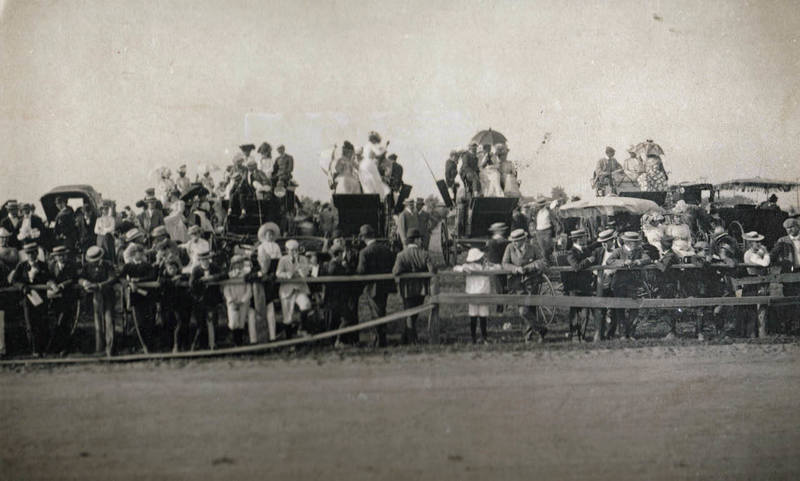
While it’s relatively safe being a spectator just enjoying the excitement of a live game, mishaps have been known to happen; such as a teenager dying after being hit on the head with a baseball, or even on home ground where 17 Malaysian drag racing fans ended up in the hospital after a car lost control and skidded right into them.
While you may think this is grounds for an epic lawsuit that you’re sure to win, the case of Hall v Brooklands Auto Racing Club showed that this isn’t really the case.
Way back in the 1900s, racing motor cars was a pretty popular sport. Given this, a racing course in Brooklands was opened in 1907 and operated without any hiccups until one fateful race in 1933 where a car flew out of the course, killing two spectators and injuring many others.
Despite this, the court ruled that the owners of the racing course were not to blame because:
- The owners had done all they could reasonably do to ensure the safety of their spectators.
- The owners cannot be expected to protect spectators from dangers that were inherent in the sport
- The spectators are implied to have accepted the risks when they attended the race
Basically, the owners of the course actually built stands for their spectators to watch the race from a safe distance. Despite this, many spectators chose to forgo the stands and stand along the iron railing to get a closer look at the cars zipping by. Usually, it was all a-okay until that fateful day when they got a closer look than they bargained for.
This case means that if you attend a baseball match and end up with a black eye from a foul ball, you can’t sue because the law acknowledges that for certain sports, there are risks involved in merely watching them.
But this is just a warm-up...
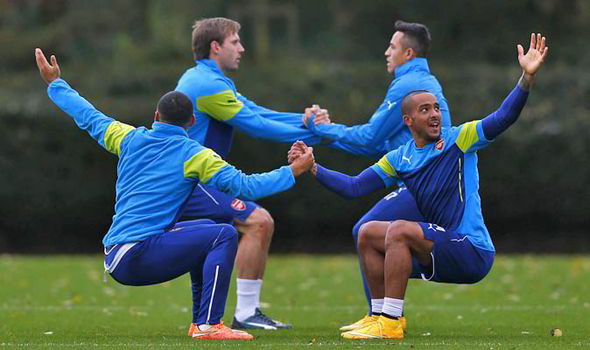
As we mentioned, sports law actually covers a broad range of laws, and we’ve only covered the surface of how regular laws can be applied to sports.
If your goal in life is to be involved in both sports and the law or simply curious to see how law has transformed a sport that you love, then you should definitely go for the seminar on March 4th at KLCC. It may not only be an educational experience because, when you register in advance, you might just find yourself standing outside your favorite English football club if you win that trip to London!
